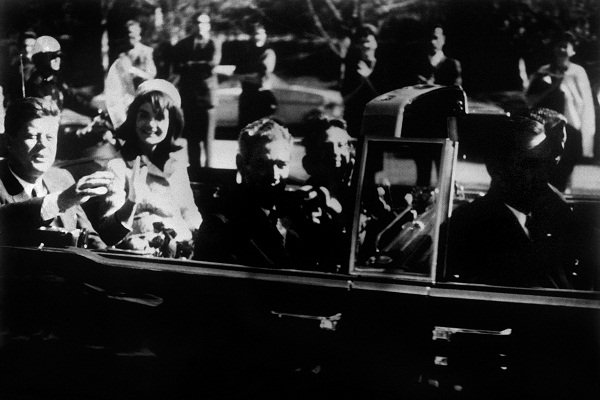‘The history of our love affair with violence’ is how Michael Newton describes his new book, Age of Assassins. In fact, its scope is much narrower: assassination in Europe and the US from the murder of Lincoln in 1865 to the attempt on Reagan’s life in 1981. So, no Gandhi, no Allende, none of the killings carried out in the name of militant Islam. Even some of the assassinations within the author’s time frame are not considered – Olof Palme’s, for example, or the murders in Italy’s anni piombi in the 1970s and ‘80s.
Newton’s central argument is that in the period covered assassination became less about political causes and more about the deed itself; and the framework of the book is essentially chronological. He discusses first the tradition of the ‘good’ assassin or tyrannicide (von Stauffenberg, who attempted to kill Hitler, is a modern example), then examines the ‘heroic’ age of European assassination in 1865-1883, when anarchists motivated by the idea of ‘propaganda by the deed’ murdered a number of establishment figures ‒ Tsar Alexander II being the most celebrated. Anarchist ideas then crossed the Atlantic with emigrants from Germany and Russia and drove the men and women who attempted to kill the ruthless industrialist Henry Clay Frick and succeeded in killing President McKinley.
The third part of the book looks at the first half of the twentieth century, starting with Gavrilo Princip’s murder of Archduke Franz Ferdinand ‒ Newton points out that Princip’s deed, like that of so many assassins, was actually counterproductive: it dragged Serbia, in whose name the murder was committed, into a war in which proportionately more Serbs died than any other nationality. A new development in this period was the arrival on the scene of the right-wing assassin, for example the wonderfully named Raoul Villain, who killed the French Socialist minister Jean Jaurès, or the various nationalist vigilantes who committed scores of murders in Weimar Germany.
The book’s final section (1950-81) concentrates on the US: the assassinations of JFK, RFK, Martin Luther King, Malcolm X, and the attempts on Andy Warhol, Governor George Wallace and Ronald Reagan. These were not political murders ‒ the lack of any obvious motivation is why they have attracted so many conspiracy theories; instead, the perpetrators were driven above all by their own inadequacies and a twisted desire for celebrity in an age when the all-pervasive mass media glamorised violence. These killings, Newton concludes, expressed nothing but ‘the gun’s authority’. There is also a brief look at state-sponsored CIA assassination plots ‒ Castro, Lumumba, Zhou Enlai, Trujillo ‒ although, strangely, nothing on the killing of Osama bin Laden.
Assassinations are over in a minute or two, and their historian needs to explain causes and consequences; but in a long book (more than 650 pages with notes) Newton tends to give us more information than we really need. We learn a great deal, for example, about the not very exciting presidents Garfield and McKinley, whose careers had little or nothing to do with the reasons they were targeted by their respective assassins. Nor is Newton afraid of digressions ‒ into movies, brainwashing, advertising, political theory, legal definitions of sanity. Some of these are more successful than others. But there are some fascinating insights into the mind of the assassin, for example, the prison diaries of Sasha Berkman, who attempted to kill Henry Clay Frick, as well as thoughtful reflections on what motivates men and women to kill in this particularly public way. A number of less well known events make for interesting reading, for example the assassination of Talât Pasha in Berlin in 1921 by a survivor of the Armenian genocide, the attempted shooting of President Roosevelt in Miami in 1933 and the various attempts on the life of Queen Victoria. And the stories themselves are well told. As Newton himself reminds us, assassination gives ‘an abrupt narrative kick’ to any history, and assassination, by definition, is an event designed for public consumption, almost, as he says, ‘an entertainment’.
Age of Assassins by Michael Newton (Faber and Faber, £25)






Comments